![]()
![]()
![]()
Use LEFT and RIGHT arrow keys to navigate between flashcards;
Use UP and DOWN arrow keys to flip the card;
H to show hint;
A reads text to speech;
22 Cards in this Set
- Front
- Back
- 3rd side (hint)
|
Plasma |
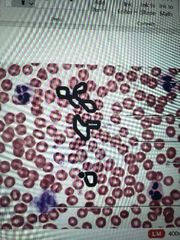
|
Fluid that surrounds. "Open space" |
|
|
Erythrocytes |

|
Biconcave disc. Most common. Red blood cells |
|
|
Leukocytes |
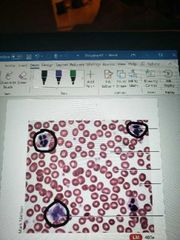
|
Different types. White blood cell |
|
|
Thrombocytes |
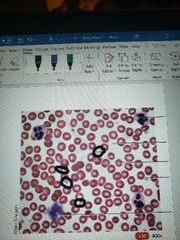
|
Platelets. Tiny. |
|
|
Neutrophils |
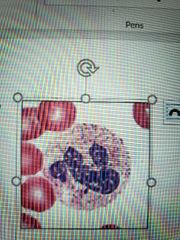
|
Nucleus contains 2-5 lobes in a chain |
|
|
Eosinophil |

|
Nucleus contains 2 lobes. Prominent red granules present |
|
|
Basophils |
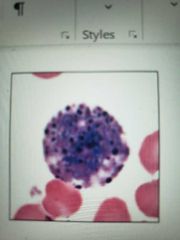
|
Prominent blue/purple granules. Nucleus mostly obscured |
|
|
Lymphocyte |

|
Cytoplasm is a pale ring around the large nucleus. Nucleus takes up most of the room |
|
|
Monocytes |

|
Largest leukocyte. Contains horseshoe or kidney shaped nucleus |
|
|
Artery |
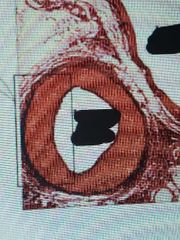
|
More circular. Larger outer layer. Smaller lumen. |
|
|
Vein |

|
Much larger. Not circular. Less outer layer. |
|
|
Tunica intima |

|
Innermost layer. Next to lumen. Thin |
|
|
Endothelium |
Simple squamous epithelium forms the part of the tunics interna next to the lumen. |
Supported by basal connective tissue |
|
|
Tunica media |

|
Middle layer. Thickest layer. Made of smooth muscle |
|
|
Tunica externa |

|
Made of connective tissue. Outermost layer |
|
|
Trabeculae of red bone marrow |

|
Crisscross bone marrow |
|
|
Megakaryocytes of red blood cells |

|
|
|
|
Hematopoietic stem cells of red bone marrow |

|
All purple dots between trabeculae |
|
|
Trabeculae of yellow bone marrow |

|
|
|
|
Adipocytes |

|
|
|
|
Megakaryocytes of yellow bone marrow |
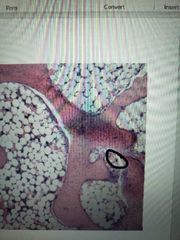
|
|
|
|
Hematopoietic stem cells of yellow marrow |

|
|

